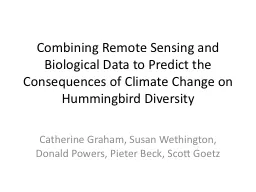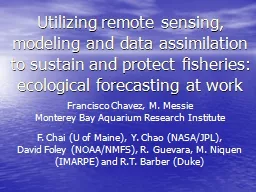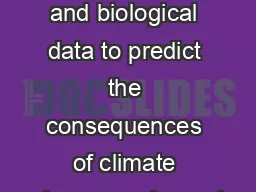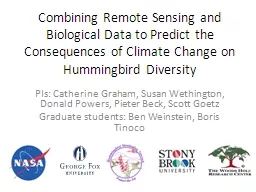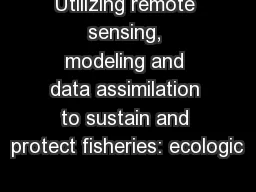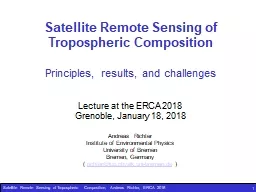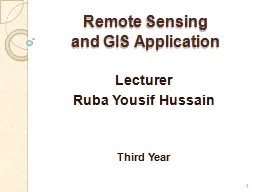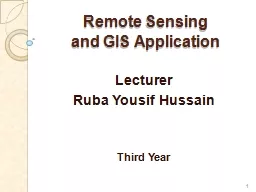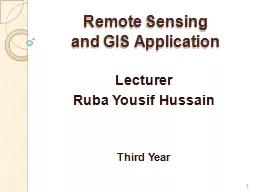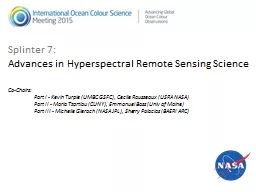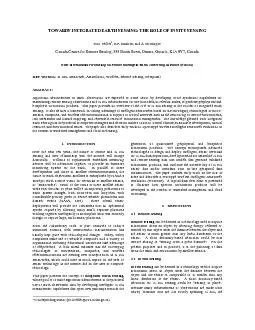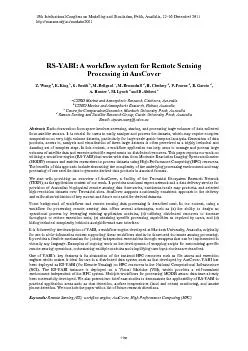PPT-Combining Remote Sensing and Biological Data to Predict the
Author : agentfor | Published Date : 2020-11-06
Consequences of Climate Change on Hummingbird Diversity Catherine Graham Susan Wethington Donald Powers Pieter Beck Scott Goetz Why Hummingbirds T hey operate
Presentation Embed Code
Download Presentation
Download Presentation The PPT/PDF document "Combining Remote Sensing and Biological ..." is the property of its rightful owner. Permission is granted to download and print the materials on this website for personal, non-commercial use only, and to display it on your personal computer provided you do not modify the materials and that you retain all copyright notices contained in the materials. By downloading content from our website, you accept the terms of this agreement.
Combining Remote Sensing and Biological Data to Predict the: Transcript
Download Rules Of Document
"Combining Remote Sensing and Biological Data to Predict the"The content belongs to its owner. You may download and print it for personal use, without modification, and keep all copyright notices. By downloading, you agree to these terms.
Related Documents

